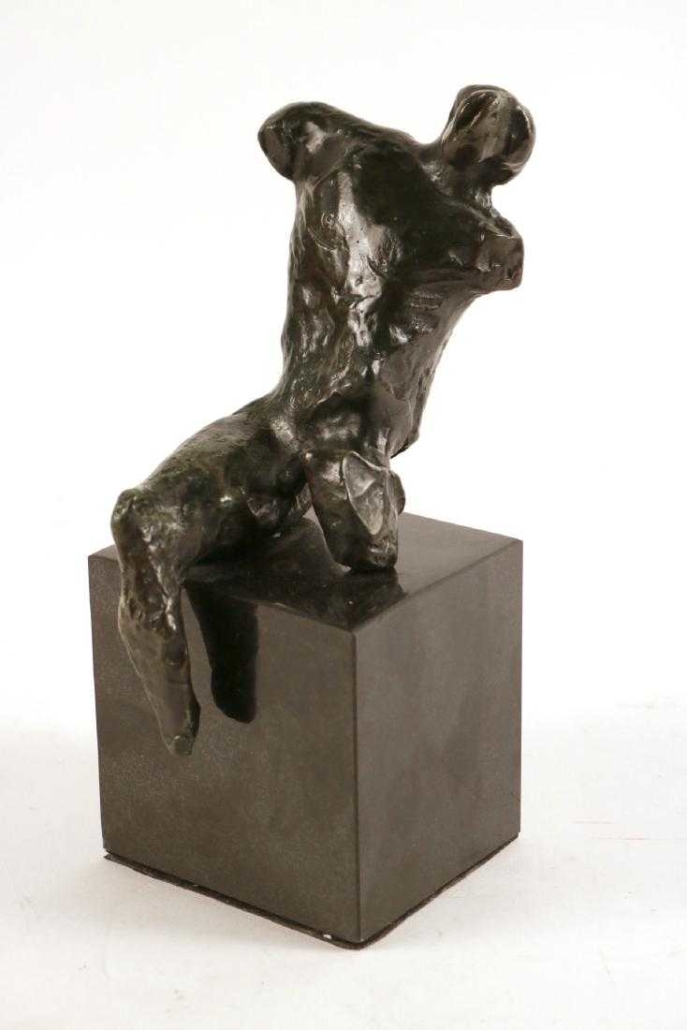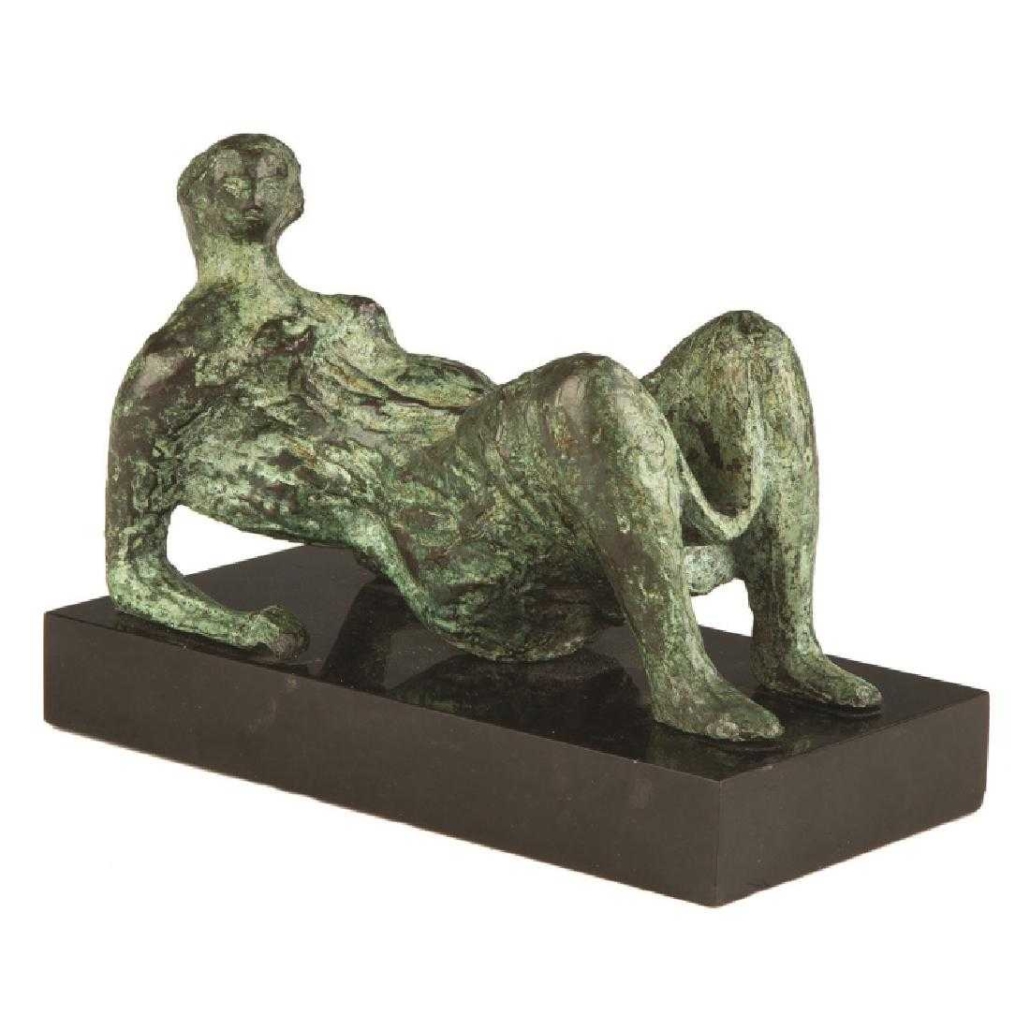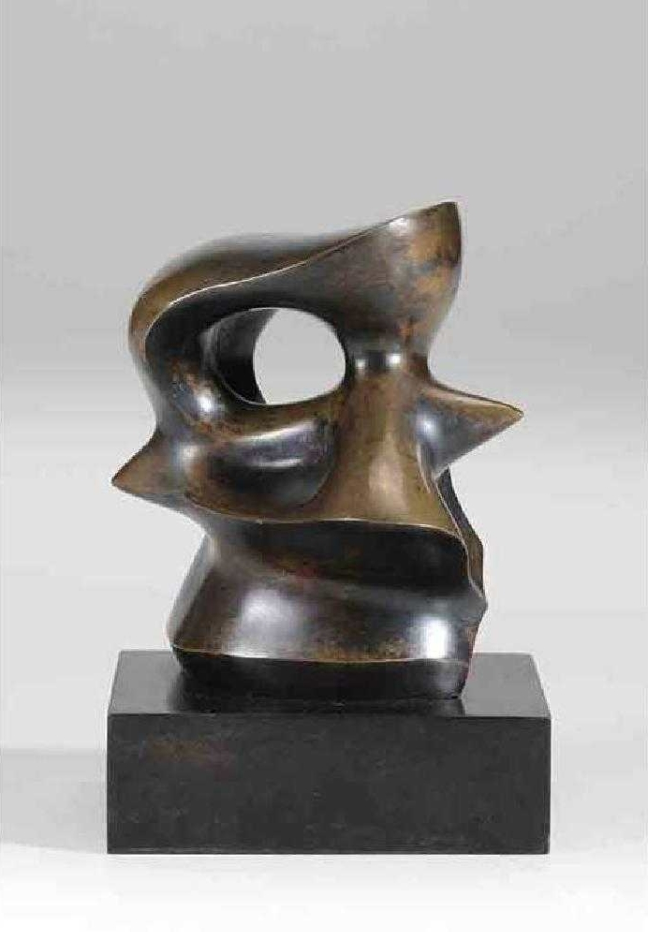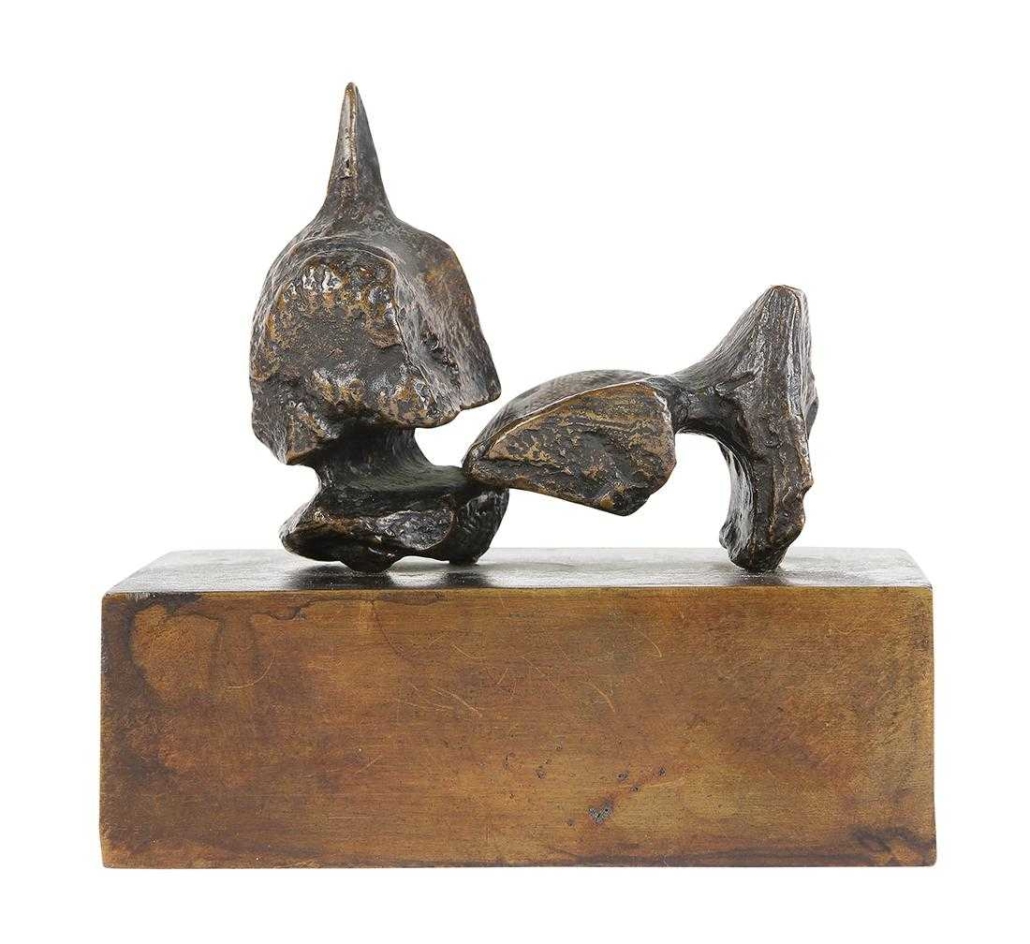Henry Spencer Moore (1898-1986) was a renowned English artist best known for his semi-abstract monumental bronze sculptures that can be seen around the world as public works of art. In addition to sculpture work, he also did innumerable drawings, including a series done during World War II that depicted Londoners seeking shelter from the German Blitz. But he’s most famous for his sculpted human forms that often depicted mother-and-child or reclining figures. Many of his works suggest the female body, especially the reclining nudes for which he is so well known.
Two events helped shape Moore as an artist. First, in 1924, while visiting Paris, he viewed the Trocadero, a plaster cast of a Toltec-Maya sculptural form, the Chaca Mool, which he’d only seen in book illustrations. The reclining figure had a profound effect on his work and became the primary motif of his sculpture thereafter. And second, around 1936, he made the transition from direct carving to casting in bronze, which meant modeling preliminary maquettes (3-D studies) in clay or plaster, rather than making preparatory drawings, which were 2-D and restrictive.
How fortunate for collectors! Since Moore’s public works of art are rare and literally weigh tons, they’re out of reach for virtually anyone who might want to own one. But a maquette or a mask – well, that’s a whole different ballgame. While it’s possible to get a crick in the neck gazing up at a full-size Moore outdoor sculpture, one of his maquettes is often small enough to fit in the hand and be mistaken for a paperweight. They’re not cheap, though. A Henry Moore maquette – just because of who he is – can run into the tens of thousands of dollars and on up into the six figures.

“The opportunity to handle works by renowned artists, often only seen in museum collections, is one of the greatest privileges of being in the auction business,” said John Nye, president and owner of Nye & Company in New Jersey. “Being able to offer a Henry Moore maquette in our September 2017 auction was one of those rare moments. And because so many of Moore’s sculptures are monumental in scale, it was a treat and a pleasure to hold one of his figures in our hands, providing an opportunity to get that much closer to the artist and his ultimate vision.”
In March 2017, Cottone Auctions in upstate New York sold a Moore maquette for $170,000, in part because of the piece’s impeccable provenance. “The most interesting thing about the maquette was that it was from the collection of Seymour Knox, who was not only personal friends with Mr. Moore but actually was one of the first to bring his work to a museum in the United States – the Albright Knox Museum,” said Matt Cottone of Cottone Auctions. “Moore created these maquettes to look at every point of view and help him envision the final sculpture.”

The Cottone maquette had a pre-sale estimate of $100,000-$150,000, so the final gavel price came as no real surprise. But at an auction held at Brunk Auctions in Asheville, N.C., on Sept. 16, 2017, a Moore maquette that carried an estimate of $12,000-$18,000 ended up soaring to $260,000. “It was a spindle piece that had been purchased from the artist at his studio by a collector in North Carolina and never left the family, and we had no comps to go by, so we erred on the side of conservative and estimated low,” said Laura Crockett, Brunk’s Fine Arts Specialist.
Ms. Crockett described Moore as “one of the most important British avant-garde sculptor-artists of the 20th century, and completely in step with his contemporaries,” adding, “He was a true innovator. He enjoyed figural work and gardens. He and his wife both loved working outside. His anthropomorphic work was important and inspiring.” Indeed, by the end of his career, Henry Moore was one of the world’s most successful living artists at auction. In 1982, four years before his death, Sotheby’s in New York sold a six-foot-tall Reclining Figure (1945) for $1.2 million.

After his death, in 1990, another Moore sculpture sold for $4.1 million, but then the market for his work slumped during the recession that followed. In 2012, however, his comeback was clearly evident at a Christie’s sale in London, when his eight-foot bronze, Reclining Figure: Festival (1951) brought a record 19.1 million British pounds, making Moore the second-most expensive 20th-century British artist, after Francis Bacon. In November 2018 at Bonhams in London, a rare Henry Moore alabaster mask titled, simply, Mask (shown at top of page) went for 3.249 million British pounds.
Between 1924 and 1930, Moore created at least a dozen diminutive masks. Typically carved in stone or cast in concrete, they conformed to what was considered a “primitive” aesthetic – one that drew upon cultural sources outside classical antiquity and the Renaissance. The Bonham mask was his only one carved from alabaster, which doubtless drove up the sale price. It was created in 1929, displaying the deep impact of a 9th-century Toltec-Maya Chac-Mool (Yucatan, Mexico) sculpture, which Moore first saw that fateful day at the Trocadero Museum in Paris.

Would you believe attempts have been made to steal Moore’s massive public works of art? It’s true. In December 2005, thieves entered a courtyard at the Henry Moore Foundation and used a crane to lower Reclining Figure 1969-70 (a bronze sculpture 3.6 meters long, weighing 2.1 tons and insured for 3 million British pounds) onto a flatbed truck, whereupon they drove off, never to be seen again. In 2012, two men were jailed for a year for stealing a sculpture titled Sundial (1965) and the bronze plinth from another work, also from the foundation’s grounds. And in Oct. 2013, Standing Figure (1950), one of four Moore sculptures in Glenkiln Sculpture Park, worth 3 million pounds, was stolen. In all of these cases, foundation officials and law enforcement agencies fear the irreplaceable artworks may have been sold for scrap.
# # #



